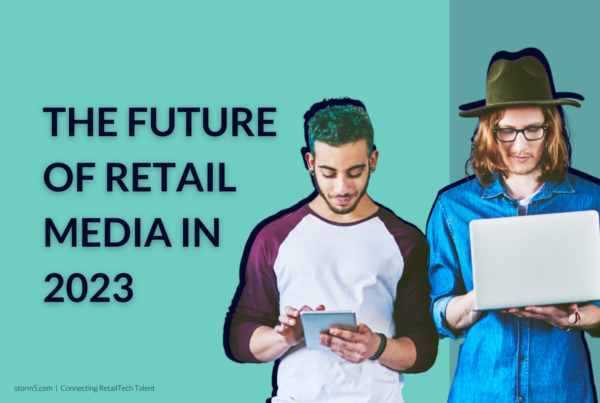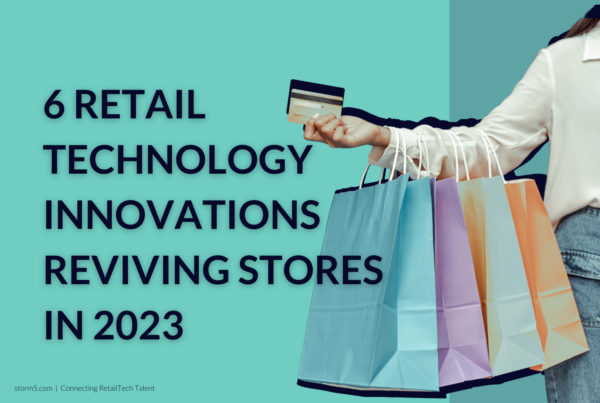How AR is Reshaping the Way We Look at Retail
Augmented reality (AR) is revolutionizing the way we think about retail. Since AR is much easier to implement than virtual reality (VR), which requires specialised…

Augmented reality (AR) is revolutionizing the way we think about retail.
Since AR is much easier to implement than virtual reality (VR), which requires specialised hardware and software applications, it unlocks a variety of unique possibilities and benefits for retail.
By fusing the convenience of digital with the personal aspect of physical shopping experiences, AR in retail enables online customers to have hands-on interactions with retail goods, fuelling the growth and development of a growing trend in retail.
Statista predicts that by 2023, 1.4 billion people will be using augmented reality on their phones alone. The industry has grown so rapidly that the Worldwide Augmented Reality Industry is expected to reach $66 billion by 2027.
Even though e-commerce is growing faster than any other retail sector, the opportunity for brick-and-mortar retailers has not disappeared completely; instead, it has shifted.
Recognizing the different lenses consumers see the world through when buying online versus in person allows business owners to construct a channel strategy that meets consumers’ needs regardless of where they buy.
How Augmented Reality Works
The term AR refers to an immersive and interactive experience in which 3D digital objects appear to interact with real-world surroundings to create a digitally enhanced environment.
AR can be experienced on a variety of devices, including smartphones and tablets, wearables, PCs and laptops, TVs, digital mirrors, connected devices such as glasses, head-mounted displays, lenses, and even AR fitting rooms. The distinction between AR and Virtual Reality (VR) is that AR “augments” the real world rather than replacing it.
The Potential of AR in Retail
The impact of AR on retail has been massive, bringing numerous benefits to the industry. AR in retail is a whole other game when it comes to optimising procedures and facilitating customer buying (both online and offline).
In retail, there are three primary ways AR operates:
- Mobile AR
- AR glasses
- Web AR
Mobile AR is best suited for retail use cases in these three ways, with web AR also having strong potential because the majority of consumers have access to smartphones, eliminating the need to invest in specialised equipment to shop using AR.
Benefits of AR Technology in Retail
AR application in retail provides numerous opportunities for businesses to increase customer satisfaction while decreasing costs. AR can transform the retail sector in a number of ways:
Advance Try-And-Buy Retail
A lot of customers favour “try-and-buy” retail strategies, which allow them to get a sample or test version of an item before making a purchase.
Online shopping had limited options for try-and-buy because there was no method for shoppers to physically examine clothing, accessories, and other lifestyle items.
With AR in retail, consumers can virtually test any object with a visual appeal on an app or website before committing to the purchase. This can include anything from clothing to furniture. For example, IKEA launched an AR app, IKEA place, which allows users to virtually ‘place’ furniture in their space. All the products in the app are 3D and true to scale, allowing customers to make sure it’s the right size, design and functionality for their room.
Reduce Returns
Another trend that has steadily increased alongside the rise of online retail is the historic rate of returns and refunds. The National Retail Federation reported that 21% of all online orders in the US were returned in 2021, totalling approximately $218 billion. E-commerce returns can be deadly, attacking profit margins aggressively, destroying conversion rates, and ultimately threatening your business. With the high costs of reverse logistics, many retailers allow customers to keep products, contributing to the retail industry’s massive overconsumption and waste problem.
Thanks to AR in retail, customers now have a better chance of determining whether a product is suitable for them, which also has a positive impact on the environment. AR helps customers avoid disappointment and choose the best products for them, resulting in lower return rates for both online and brick-and-mortar stores.
Greater Personalization
Traditional online shopping methods eliminate the human touch, such as going to a store, speaking with an employee, choosing a product, testing it out, and weighing your options before making a purchase.
Customers and retailers can both personalize elements of online shopping using AR-powered retail. For instance, information about the products that customers choose to test out through AR-enhanced shopping speaks volumes about their interests, preferences, and patterns of buying behaviour, which retailers can utilize to create tailored advertising and marketing campaigns.
Improve Self-Service
Retailers can enhance self-service by integrating mobile AR with physical storefronts. By simply holding up their phone in front of an item, the AR app will instantly display product data, assembly instructions, provenance history, and other information relevant to the purchase.
Customers can sometimes find it tedious and time-consuming to wait outside fitting rooms. As a result, virtual mirrors, where they can simply determine the size of the products they like on a digital screen in front of them, boost the ever-important convenience factor.
Brand Awareness and Engagement
As AR in retail is a new and emerging technology, ad campaigns utilising it frequently attract customers’ attention. Technology-based ads can increase traffic and boost brand awareness.
With the help of fun and engaging experiences, several brands are already adopting AR to increase customer engagement. For the holiday season, Starbucks developed cups that “come alive” when customers examine them on their smartphone displays. For the new and average customer, this made an interactive and memorable shopping experience.
Is AR in Retail Worth It?
The use of AR in retail has several benefits, but it enhances online experiences the most. When compared to customers who visit a retailer’s e-commerce site, users of a brand’s AR app are less likely to switch to competitors.
Customers with an AR shopping experience are more likely to return and make more purchases because of the lasting impact it makes on them. It’s also reasonably easy to start with an AR-friendly product catalogue, thanks to new tools and technologies.
Despite its benefits, AR usage remains confined to specific market segments and demographics and lacks e-commerce’s universal reach. Apps for AR shopping that are poorly done can potentially cause more harm than good.
AR in retail is a powerful tool that has the potential to transform the average retailer and elevate their customer experience, but it’s much easier to implement when you are an established player in the market with a well-targeted consumer base.
Your Partner in Growth
As the use of AR and the broader Extended Reality (XR) space in retail grows, so does the demand for talent to support it. We have specialized at Storm5 in connecting not only RetailTech talent but also AR talent with disruptive AR players like yourself. We can help you at any stage of your development by connecting you with the right people. Please do not hesitate to contact us; we would be delighted to see how we can assist and support you in your journey and with your recruitment needs.







